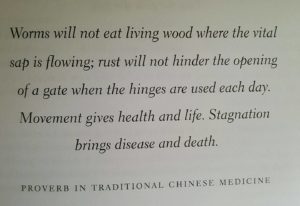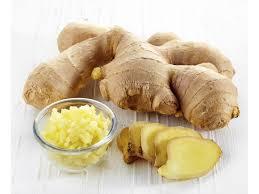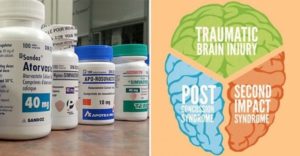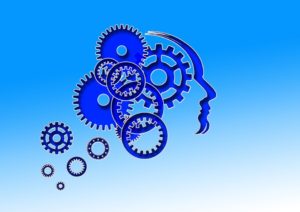
Adani Linked Corruption/Incompetence
I received this from Lock The Gate.
Dear Tom,
I’m a grazier from Central Queensland, and I’ve just found out that the Australian government is playing Russian roulette with the Indian billionaire, Adani, and our water.
Secret documents obtained through Freedom of Information (FOI) has revealed our worst fears: that crucial advice about the impacts of the Adani mine on river water have been ignored*.
The documents obtained by Lock the Gate show that the Department of Agriculture and Water warned about significant risks to our water resources from Adani plans to take 12.5 billion litres of river water each year.
Every day that this drought grinds on hardens my resolve to fight for our water.
As I watch my western Queensland soil crack open and my grasses perish I realise we must prioritise food production over washing coal for export.
Adani wants to take the equivalent of approximately 5,000 Olympic swimming pools of river water each year to run their risky mega-mine.
But the Federal Government has given them the green light to bypass the water trigger and avoid key environmental impact assessments for their impacts on the river system.
If advice from the Dept of Ag had been followed, there should have been a full environmental assessment and independent review.
Another department, Geoscience Australia, also found problems stating that Adani had missed important mapping of Groundwater Dependent Ecosystems.
So that’s two government agencies who have shown just how weak and shoddy Adani’s proposals are, but so far government decision makers are ignoring them.
Together, we need to keep piling on the pressure, exposing the secret deals happening behind closed doors, and commissioning research that reveals the true impacts of this project.
It’s not just the Suttor River at risk, Adani’s megamine also threatens recharge aquifers of the Great Artesian Basin.
We absolutely rely on these water resources in central and western Queensland. We can’t survive without them.
We can’t afford to let Adani risk it all. In a drying climate we need the strictest controls possible on mining, to allow our rural industries and towns to survive.
Warm regards,
Bruce Currie
New ginger study makes incredible discovery

Radioprotective Effects From Gingerol and Other Plant-Based Compounds
After getting “substantial attention” from researchers around the world, a clinical review confirms that ginger (Zingiber officinale) serves as a viable antidote and protective agent against fatal poisoning from such agents as pesticides, environmental pollutants, heavy metals, bacterial and fungal toxins and even some cosmetic products and medications.
Published in Food and Chemical Toxicology, the study acknowledges the protective effects of ginger and its phytochemicals against natural, chemical and radiation-induced toxicities. It also holds an “arsenal of metabolites” with numerous health benefits, including antioxidant, anti-inflammatory and anti-apoptotic (programmed cell death-inducing) properties.
Nutrition Facts discusses how compounds in ginger root protect white blood cells in vitro (a test tube or petri dish) against genetic damage caused by exposure to radiation as a cancer treatment. Scientists have been curious about the disease-preventative elements in of plant-based foods, and as Greger asserts, “lots of different plant products have been found to be protective in vitro against radiation damage by a whole variety of mechanisms.”
Ginger and its phytochemicals, including zingerone, have radioprotective effects. Studies on the mechanisms involved suggest its antioxidant compounds scavenge free radicals and fight inflammation while being anticlastogenic — protective against chromosome breakage or disruption. What is zingerone? “It’s a phytonutrient found in cooked ginger root. You blast cells with some gamma rays, and you get less DNA damage, and fewer free radicals, when you add ginger phytonutrients. They even compared it to the leading drug injected into people for radiation sickness, and found the ginger compound to be 150 times more powerful, and without the serious side effects of the drug itself.”
https://www.nexusnewsfeed.com/article/food-cooking/new-ginger-study-makes-incredible-discovery/
Statin scam exposed: Cholesterol drugs cause rapid aging, brain damage and diabetes

Statins, the widely prescribed class of drugs said to lower “bad” cholesterol and reduce the risk of heart problems, has recently come under fire after a study revealed that they destroy human health more than they work to improve it.
Police Officer Chris Savage Blows Lid On Vaccine Crimes In Australia!!

“I was in the Queensland Police Service for 20 years and I saw first hand how the vaccines caused death and the police would investigate, and while supported by the medical system would prosecute the parents for the injuries and death caused by the vaccines.” Chris Savage, Queensland Police officer (Jim Stone, Editor 5/2/2012)
From a Brave Doctor
My demographic was menopausal and peri menopausal women. You don’t ask questions in medical school. As an emergency room physician, I rubber stamped dtap as a matter of protocol. I’m one of very few physicians that has seen active polio. That was while I was in China. My stance on vaccines was predicated on ignorance and misinformation.
In 2009, a group of nurses asked me if they should get the flu shot. My reflex answer was that they should get the vaccine in order to prevent exposure to patients. Shortly after making the statement, I decided I better get educated to support my answer. I got a copy of a package insert from the flu vaccine. To my surprise, hidden in plain site, the package insert revealed the THE FLU VACCINE DOES NOT PREVENT THE FLU!
More research revealed why. The symptoms of the flu are not caused by the virus. The symptoms are caused by your immune system response to the virus. The vaccine targets 3-4 viruses. However,there are 200 or so viruses that can cause the exact same immune system response. This makes getting the flu shot similar to:
1) Taking a birth control pill once each year
2) Only locking one car door
3) Hiding behind a chain link fence to escape gunfire
4) Trying to hit a major league fast ball with a teaspoon
5) Using an umbrella to protect yourself from lightning
The more I looked into vaccines in general, the less sense they made. 2 key things. One is that viruses don’t produce a toxin. Polio is not caused by the virus but the immune system response to the virus. Same with measles,mumps and Ebola. Secondly is the fact that the symptoms associated with the these viruses are actually caused by the abnormal immune system response to the viruses. This says we should be more focused on the immune system response than vaccines.
Once I started looking into autism, it became clear that it was associated with vaccines. Too many women came to me with the exact same story-normal child that regressed after getting vaccinated. Autism is the tip of a large iceberg of vaccine injury conditions. Sudden infant death syndrome, peanut allergies, childhood seizures, ADD/ADHD, acute flaccid myelitis AKA polio, are all manifestations of vaccine injury.
Go Out And Stun The World

Love Yourself

6 Natural, Safe Mold Treatment Solutions to use Instead of Bleach

Further to the article on mold last week, here’s some helpful data from a reader of my newsletter.
https://www.durangohomesforsale.com/mold-cleaning-solutions.php
How to keep your brain sharp for a lifetime

This article has some good tips but also contains some false datums. The brain is active LONG before a baby is born and does not store your memories – you do!. It does not have the physical capacity to store a 52 perceptic image every 30th of a second for as long as you live! The brain is little more than a mechanical switchboard between you, the being, and your body. But, like every piece of equipment, it does need to be properly maintained otherwise it does go to hell in a handbasket, as anyone who has had to cope with a dementia sufferer can reasily attest. So here are some tips on how to “grease the cogs”.
